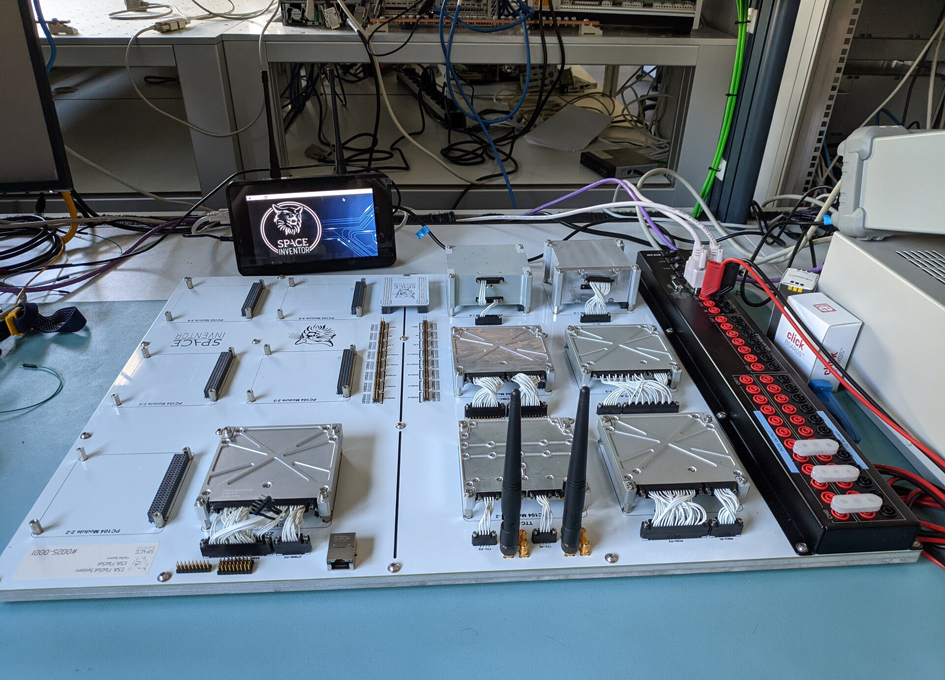Opened-out ‘FlatSat’ For CubeSat Testing

ESA’s latest CubeSat mission is destined to never leave the ground.
Instead it is doing its duty as an opened-out ‘FlatSat’ – with its interlinked subsystems spread out across a table at the Agency’s Data Systems and Microelectronics Laboratory at its ESTEC technical centre in the Netherlands.
“This dissembled CubeSat has all its subsystems easily accessible,” explains ESA Young Graduate Trainee Malte Bargholz, working on the FlatSat project. “This includes its on-board computer, radio and telemetry, its attitude and orbit control system, battery and power system and satellite navigation receiver, along with additional slots to plug in external hardware”.
“This setup allows us to access and test everything in a straightforward way, compared to a normal satellite where everything ends up tightly integrated and packed together – especially in the case of miniaturised CubeSats. We can also try out new approaches for operating such missions, and test the interoperability of various commercial CubeSat components.”
CubeSats are small, low-cost satellites assembled from standardised parts in 10 cm boxes hosting commercial-off-the-shelf electronics. Originally developed for educational purposes, CubeSats are increasingly finding operational and commercial uses, while ESA is employing them for a series of ambitious technology in-orbit demonstration missions.
“Our section is supporting a lot of new CubeSat activities, with numerous new subsystems on the way, and we need to be able to test them in a representative way,” notes Tomasz Szewczyk of ESA’s On-Board Computer and Data Handling Section.
“With this FlatSat in our lab we can simply plug parts in and test them on a functional level: are they working properly with the rest of the satellite? FlatSats have previously been created for larger missions, but this is the first time we have created a complete CubeSat version in ESA, allowing us to become familiar with the families of low-cost components employed within this fast-evolving satellite sector.”
The tabletop FlatSat operates as if it were in orbit, allowing complete end-to-end operations: telecommands arrive via a radio link from a small ‘ground station’ – in fact a small Raspberry Pi variant with aerials attached. Telemetry can be downlinked and sampled in turn for analysis.
The subsystsems making up the FlatSat were supplied by satellite engineering company SpaceInventor in Denmark.
FlatSat has been successfully used by two TU Delft students in their master thesis to test FDIR algorithms and evaluating new scientific payloads for radiation monitoring. On top of that, a new CubeSat On-Board Computer incorporating a rad-tolerant microcontroller is currently being tested. Developed by Skylabs in Slovenia this project is being supported through ESA’s General Technology Support Programme, readying new promising hardware for space.
The lab will also be working closely with ESA’s new CubeSat Systems Unit, devoted to the design and development of these miniature missions, including the study of payloads employing AI.
Having studied embedded systems for his undergraduate degree, Malte was inspired to come to ESTEC by a long-term interest in space and how embedded system work in such a harsh environment. He will spend another year as a Young Graduate Trainee in which he, along with other tasks, plans to integrate an AI-based detection algorithm into the newly arrived payload computer for the Flatsat.








